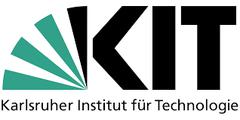Participants
Participants
Deutsches Elektronen Synchrotron
DESY is one of the world’s leading particle accelerator centres. Researchers use the large‐scale facilities at DESY to explore the microcosm in all its variety – ranging from the interaction of tiny elementary particles to the behaviour of innovative nanomaterials and the vital processes that take place between biomolecules to the great mysteries of the universe. The accelerators and detectors that DESY develops and builds at its locations in Hamburg and Zeuthen are unique research tools. DESY is a member of the Helmholtz Association, and receives its funding from the German Federal Ministry of Education and Research (BMBF) (90 per cent) and the German federal states of Hamburg and Brandenburg (10 per cent).
Principal Investigator: Dr. Ralph Aßmann (coordinating PI)
Helmholtz-Zentrum Dresden Rossendorf
The long-term goal of the Helmholtz-Zentrum Dresden-Rossendorf (HZDR) is to conduct cutting-edge research in the areas of Energy, Health, and Matter. As member of the Helmholtz Association, the HZDR offers outstanding infrastructure for external as well as internal users: ELBE Center for High-Power Radiation Sources, Ion Beam Center, and Dresden High Magnetic Field Laboratory.
Some 1,200 members of staff are currently working at one of six HZDR sites in Germany and France. Due to strong cooperation with many partners from the scientific and commercial sectors, the center is globally connected. By actively applying its research findings, it is making a valuable contribution to the future of our economy and society.
Principal Investigator: Prof. Dr. Ulrich Schramm (deputy coordinating PI)
GSI Helmholtzzentrum für Schwerionenforschung
The GSI Helmholtzzentrum für Schwerionenforschung GmbH in Darmstadt, Germany, operates a unique large-scale accelerator for ions. GSI was founded it 1969 and is a member of the Helmholtz Association. Researchers from around the world use the GSI facility for experiments that help them make fascinating discoveries in basic research. The goal of the scientific research conducted at GSI is to reach a better understanding of the structure and behaviour of the world that surrounds us. The best-known results are the discovery of six new chemical elements and the development of a new type of tumour therapy using ion beams.Currently the international accelerator centre FAIR – one of the largest research projects in the world – is being built at GSI. The centrepiece of the facility is a ring accelerator with a circumference of 1,100 meters. Connected to it is a complex system of storage rings and experimental stations. The existing GSI accelerators will serve as pre-accelerators.
Principal Investigator: Dr. Vincent Bagnoud
Forschungszentrum Jülich
Forschungszentrum Jülich makes a vital contribution to solving major challenges facing society in the fields of information, energy, and bioeconomy. It focuses on the future of information technologies and information processing, complex processes in the human brain, the transformation of the energy system, and a sustainable bioeconomy. Forschungszentrum Jülich develops simulation and data sciences as a key research method and makes use of large, often unique, scientific infrastructures. Its work spans a range of topics and disciplines and it exploits synergies between the research areas.
Principal Investigator: Dr. Markus Büscher
Helmholtz-Zentrum Berlin
Two working groups at the HZB contribute to this project: Johannes Bahrdt's Undulators Department develops and builds two novel undulators: The world's first in-vacuum apple undulator will be used at BESSY II. The second undulator, a sophisticated refined development of the prototype, will be installed at the free-electron laser in Hamburg's lighthouse project. Thorsten Kamps' group "Generation of highly brilliant electron beams" is working on a laser-based beam diagnostic device. The aim is to characterize the properties of the electron beams generated.
Andreas Jankowiak, head of the Institute of Accelerator Physics at the HZB and spokesman for the ARD programme, adds: "Combining the competence of all Helmholtz Accelerator Centres in this way promises groundbreaking developments and new applications for ultra-compact particle accelerators.
Principal Investigator: Prof. Dr. Andreas Jankowiak
Helmholtz-Institut Jena
The Helmholtz Institute Jena (HI Jena) is an outstation of the GSI Helmholtz Center for Heavy Ion Research and is located on the campus of the Friedrich Schiller University (FSU) in the city of Jena. Additional partner institutions are the Helmholtz centers DESY and HZDR. Founded in 2009, the institute's research activities focus on the physics occurring at the border between conventional particle-acceleration technology and the fast-evolving field of laser-induced particle acceleration. HI Jena is concerned with advancing these new laser-induced accelerator concepts, as well as with the production and investigation of intense photon and particle beams, including their interaction with matter. Accordingly, its work is focused on the development of high-power laser systems, novel laser-based accelerator concepts, X-ray spectroscopy, strong-field quantum electrodynamics and the physics of hot dense plasmas. Thus, the HI Jena provides important contributions to future research projects currently being designed and built. Such projects include FAIR at the GSI Helmholtz Center, the FEL photon sources FLASH and XFEL at DESY. Moreover, it will effectively strengthen FSU Jena’s research profile by facilitating new areas of research and significantly stimulate cooperation between the participating Helmholtz Centers and the university.
Principal Investigator: Prof. Dr. Malte C. Kaluza
Karlsruher Institut für Technologie
Being „The Research University in the Helmholtz Association“, KIT creates and imparts knowledge for the society and the environment. It is the objective to make significant contributions to the global challenges in the fields of energy, mobility and information. For this, about 9,300 employees cooperate in a broad range of disciplines in natural sciences, engineering sciences, economics, and the humanities and social sciences. KIT prepares its 25,500 students for responsible tasks in society, industry, and science by offering research-based study programs. Innovation efforts at KIT build a bridge between important scientific findings and their application for the benefit of society, economic prosperity, and the preservation of our natural basis of life.
Principal Investigator: Prof. Dr. Anke-Susanne Müller
Working closely together with the universities:
Technische Universität Darmstadt, Technische Universität Dresden, Universität Hamburg, Universität Jena, Universität Münster, Universität Strathclyde (UK)
- Imprint
- Data Privacy Policy
- Declaration of Accessibility
- © ATHENA-Helmholtz. All rights reserved.
- Design: HTML5 UP








